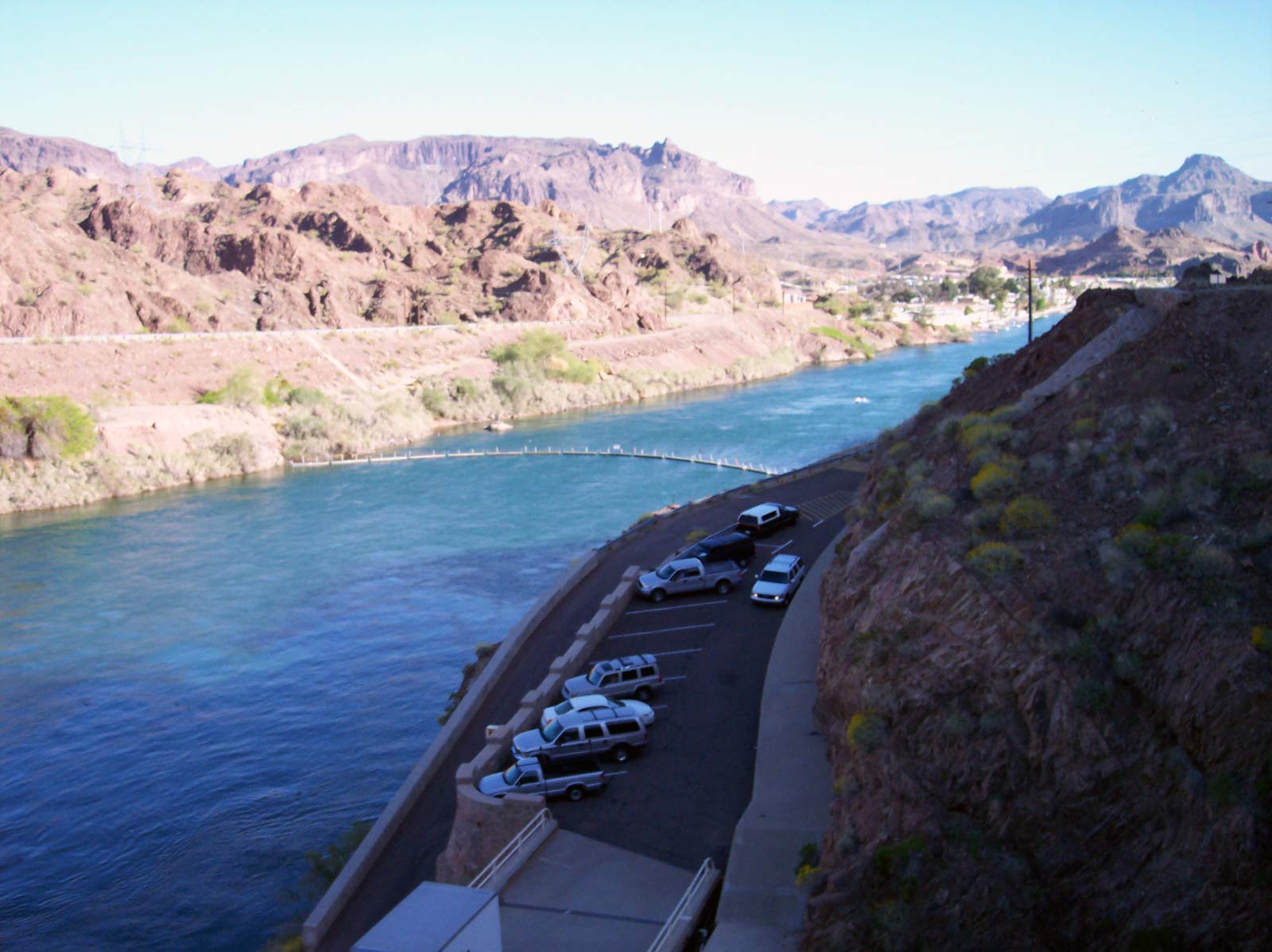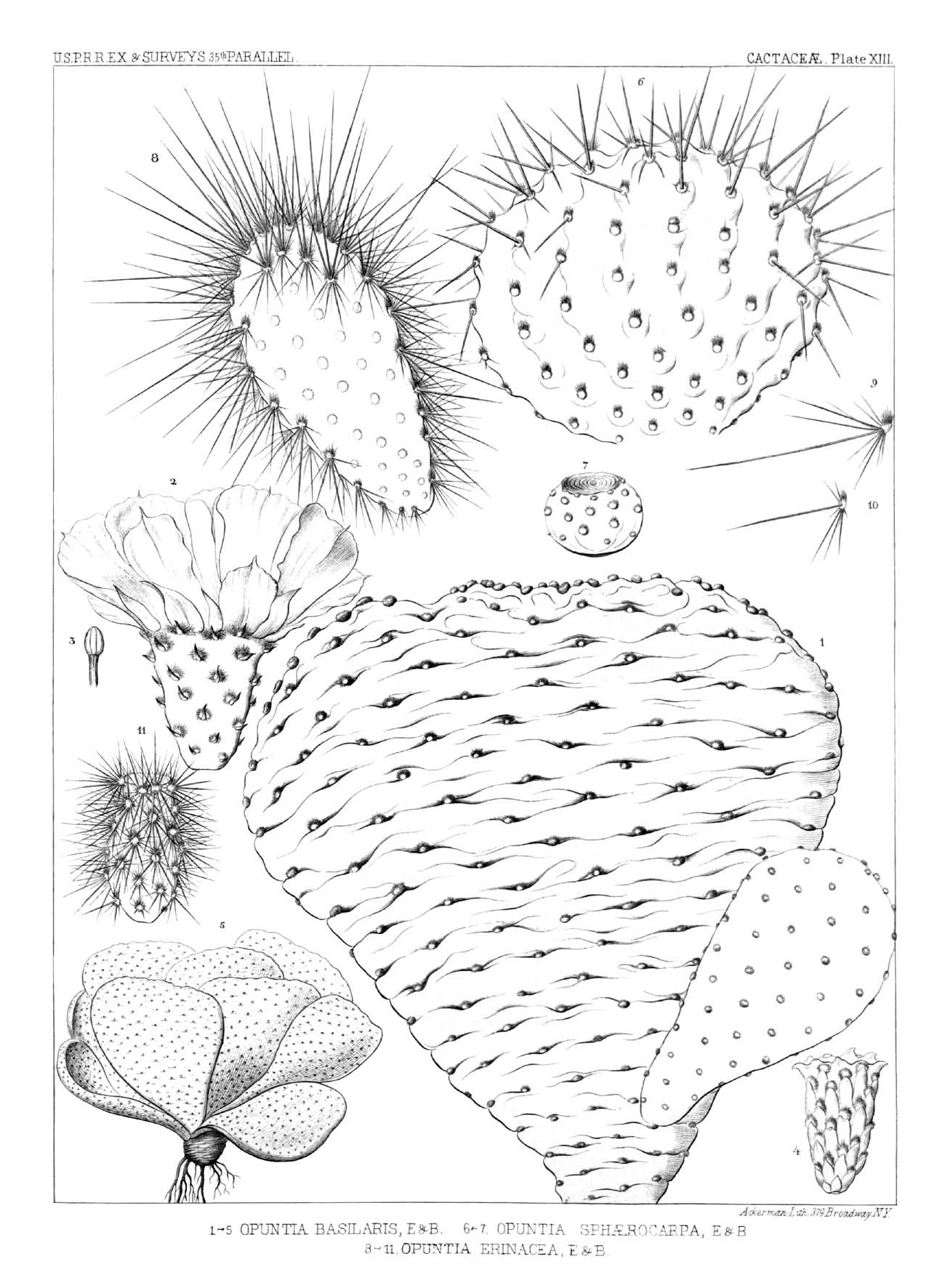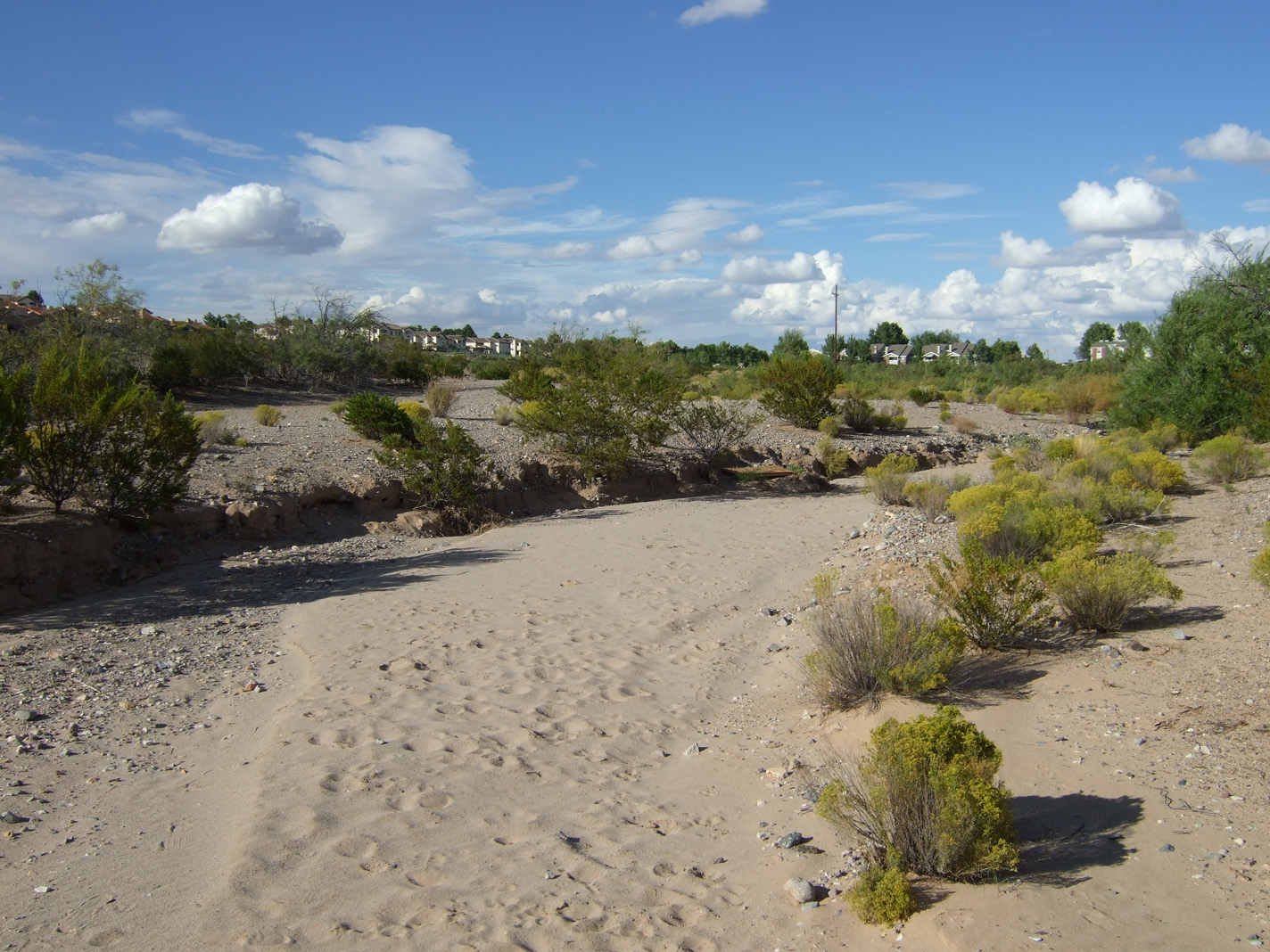|
Little Harquahala Mountains
The Little Harquahala Mountains are a small, arid, low-elevation mountain range of western-central Arizona, in the southeast of La Paz County. The range is northwest-by-southeast-trending and is in a region of about thirty landforms, plains, valleys, and mountain ranges called the Maria fold and thrust belt. The region is in the Basin and Range and three mountain ranges are in a parallel, northwest-by-southeast-trending thrust belt, with two intervening valleys. The Little Harquahala Range borders the second valley and third mountain range, the McMullen Valley and Harquahala Mountains, on their southwest borders. The range is a section of a water divide for tributaries to two river watersheds on the Gila and Colorado Rivers. An even smaller range is connected north on the water divide, the 8-mile (13 km) long Granite Wash Mountains. Maria fold and thrust belt The three mountain ranges and two valleys bordered to the northeast: * Buckskin Mountains ** Butler Valley (Arizo ... [...More Info...] [...Related Items...] OR: [Wikipedia] [Google] [Baidu] |
Buckskin Mountains
The Buckskin Mountains is a mountain range in La Paz County, Arizona, United States. The range lies just east of the north–south Colorado River, and borders south of the east–west, west-flowing Bill Williams River. Description The range is part of a three-range sequence of mildly arc-shaped ranges, and two intermountain valleys in the Maria fold and thrust belt, a region in western Arizona and southeast Southern California, with the Colorado River flowing south through the western part of the belt. The fold-and-thrust-belt region contains numerous plains, valleys, and mountain ranges, about 30 landforms in all. The Buckskin Mountains also extend west into a section abutting the Colorado River. Buckskin Mountain State Park borders the south of the Bill Williams River. Buckskin Mountains: west, central, and southeast The southeast section of the Buckskin Mountains are part of a three-mountain range thrust-faulted system, with the Harcuvar and Harquahala Mountains. The hi ... [...More Info...] [...Related Items...] OR: [Wikipedia] [Google] [Baidu] |
Mountain Ranges Of The Sonoran Desert
A mountain is an elevated portion of the Earth's crust, generally with steep sides that show significant exposed bedrock. Although definitions vary, a mountain may differ from a plateau in having a limited summit area, and is usually higher than a hill, typically rising at least 300 metres (1,000 feet) above the surrounding land. A few mountains are isolated summits, but most occur in mountain ranges. Mountains are formed through tectonic forces, erosion, or volcanism, which act on time scales of up to tens of millions of years. Once mountain building ceases, mountains are slowly leveled through the action of weathering, through slumping and other forms of mass wasting, as well as through erosion by rivers and glaciers. High elevations on mountains produce colder climates than at sea level at similar latitude. These colder climates strongly affect the ecosystems of mountains: different elevations have different plants and animals. Because of the less hospitable terrain and ... [...More Info...] [...Related Items...] OR: [Wikipedia] [Google] [Baidu] |
Drainage Divides
Drainage is the natural or artificial removal of a surface's water and sub-surface water from an area with excess of water. The internal drainage of most agricultural soils is good enough to prevent severe waterlogging (anaerobic conditions that harm root growth), but many soils need artificial drainage to improve production or to manage water supplies. History Early history The Indus Valley civilization had sewerage and drainage systems. All houses in the major cities of Harappa and Mohenjo-daro had access to water and drainage facilities. Waste water was directed to covered gravity sewers, which lined the major streets. 18th and 19th century The invention of hollow-pipe drainage is credited to Sir Hugh Dalrymple, who died in 1753. Current practices Geotextiles New storm water drainage systems incorporate geotextile filters that retain and prevent fine grains of soil from passing into and clogging the drain. Geotextiles are synthetic textile fabrics specially manu ... [...More Info...] [...Related Items...] OR: [Wikipedia] [Google] [Baidu] |
University Of Arizona
The University of Arizona (Arizona, U of A, UArizona, or UA) is a public land-grant research university in Tucson, Arizona. Founded in 1885 by the 13th Arizona Territorial Legislature, it was the first university in the Arizona Territory. The university is part of the Association of American Universities and the Universities Research Association. In the former, it is the only member from the state of Arizona. The university is classified among "R1: Doctoral Universities – Very High Research Activity". The University of Arizona is one of three universities governed by the Arizona Board of Regents. , the university enrolled 49,471 students in 19 separate colleges/schools, including the University of Arizona College of Medicine in Tucson and Phoenix and the James E. Rogers College of Law, and is affiliated with two academic medical centers ( Banner – University Medical Center Tucson and Banner – University Medical Center Phoenix). In 2021, University of Arizona acquired ... [...More Info...] [...Related Items...] OR: [Wikipedia] [Google] [Baidu] |
Beavertail Cactus
''Opuntia basilaris'', the beavertail cactus or beavertail pricklypear, is a cactus species found in the southwest United States. It occurs mostly in the Mojave, Anza-Borrego, and Colorado Deserts, as well as in the Colorado Plateau and northwest Mexico. It is also found throughout the Grand Canyon and Colorado River region as well as into southern Utah and Nevada, and in the western Arizona regions along the Lower Colorado River Valley. Description ''Opuntia basilaris'' is a medium-sized to small prickly pear cactus tall, with pink to rose colored flowers. A single plant may consist of hundreds of fleshy, flattened pads. These are more or less blue-gray, depending on variety, long and less than wide and thick. They are typically spineless, but as is typical for ''Opuntia'' species, have many small barbed bristles, called glochids, that easily penetrate the skin. ''Opuntia basilaris'' blooms from spring to early summer. Taxonomy One of the first known descriptions of ... [...More Info...] [...Related Items...] OR: [Wikipedia] [Google] [Baidu] |
List Of Bouse And Centennial Wash Landforms
A ''list'' is any set of items in a row. List or lists may also refer to: People * List (surname) Organizations * List College, an undergraduate division of the Jewish Theological Seminary of America * SC Germania List, German rugby union club Other uses * Angle of list, the leaning to either port or starboard of a ship * List (information), an ordered collection of pieces of information ** List (abstract data type), a method to organize data in computer science * List on Sylt, previously called List, the northernmost village in Germany, on the island of Sylt * ''List'', an alternative term for ''roll'' in flight dynamics * To ''list'' a building, etc., in the UK it means to designate it a listed building that may not be altered without permission * Lists (jousting), the barriers used to designate the tournament area where medieval knights jousted * ''The Book of Lists'', an American series of books with unusual lists See also * The List (other) * Listing (d ... [...More Info...] [...Related Items...] OR: [Wikipedia] [Google] [Baidu] |
Gila Bend Mountains
The Gila Bend Mountains are a long mountain range of the north-central Sonoran Desert southwest of Phoenix, Arizona and in southwest Maricopa County. The Gila River of New Mexico and Arizona transects the entire state of Arizona, and the watershed covers about 65% of Arizona. The famous Gila Bend of the river changes the west-southwest flow to south-flowing, then back to west-flowing. Painted Rock Reservoir and the Dendora Valley are nestled at the south of the Gila Bend Mountains, the monolith which causes the diversion of the Gila Bend. Gila Bend, Arizona is located at the southeast of the bend, on Interstate 8. Centennial Wash borders the north of the range and has its junction with the Gila River in the Arlington State Wildlife Area. Peaks, and landforms The highest elevation in the mountains is Woolsey Peak at , in the range's center-east. Two peaks are slightly west. In the north-center, Signal Peak, at , anchors the center of the small Signal Mountain Wilderness. ... [...More Info...] [...Related Items...] OR: [Wikipedia] [Google] [Baidu] |
Arroyo (creek)
An arroyo (; from Spanish arroyo , "brook"), also called a wash, is a dry stream, creek, stream bed or gulch that temporarily or seasonally fills and flows after sufficient rain. Flash floods are common in arroyos following thunderstorms. ''Wadi'' (Arabic) is used in North Africa and Western Asia for similar landforms. The desert dry wash biome is restricted to the arroyos of the southwestern United States. Arroyos provide a water source to desert animals. Types and processes Arroyos can be natural fluvial landforms or constructed flood control channels. The term usually applies to a Grade (slope), sloped or mountainous terrain in xeric and desert climates. In addition: in many rural communities arroyos are also the principal transportation routes; and in many urban communities arroyos are also parks and recreational locations, often with linear multi-use bicycle, pedestrian, and equestrian trails. Flash flooding can cause the deep arroyos or deposition of sediment on flo ... [...More Info...] [...Related Items...] OR: [Wikipedia] [Google] [Baidu] |
Wickenburg, Arizona
Wickenburg is a town in Maricopa and Yavapai counties, Arizona, United States. As of the 2020 census, the population of the town was 7,474, up from 6,363 in 2010. History The Wickenburg area, along with much of the Southwest, became part of the United States by the 1848 treaty that ended the Mexican–American War. The first extensive survey was conducted by Gila Rangers who were pursuing Natives who had raided the Butterfield Overland Mail route and attacked miners at Gila City. In 1862, a gold strike on the Colorado River near present-day Yuma brought American prospectors, who searched for minerals throughout central Arizona. Many of the geographic landmarks now bear the names of these pioneers, including the Weaver Mountains, named after mountain man Pauline Weaver, and Peeples Valley, named after a settler. A German named Henry Wickenburg was one of the first prospectors. His efforts were rewarded with the discovery of the Vulture Mine, from which more than $30 milli ... [...More Info...] [...Related Items...] OR: [Wikipedia] [Google] [Baidu] |
Aguila, Arizona
200px, Aguila in 2012, looking west on U.S. Route 60 Aguila is an unincorporated community and census-designated place (CDP) in Maricopa County, Arizona, United States. It is located on U.S. Route 60, west of Wickenburg and northeast of Wenden. Major economic activities include cantaloupe farming and formerly included mining. It uses the same street numbering system as Phoenix. As of the 2020 census, the population of Aguila was 565, down from 798 in 2010. Demographics Aguila first appeared on the 1920 U.S. Census as the 52nd Precinct of Maricopa County. In 1930, it simply appeared as the Aguila Precinct. It was recorded as having a Spanish/Hispanic majority for that census (the census would not separately feature that racial demographic again until 1980). Aguila's population was 40 in 1940,'s population was 25 in 1940. and 120 in the 1960 census. In 2010, it was made a census-designated place (CDP). As of the census of 2010, there were 798 people living in Aguila ... [...More Info...] [...Related Items...] OR: [Wikipedia] [Google] [Baidu] |
Interstate 10 In Arizona
In the U.S. state of Arizona, Interstate 10 (I‑10), the major east–west Interstate Highway in the United States Sun Belt, runs east from California, enters Arizona near the town of Ehrenberg and continues through Phoenix and Tucson and exits at the border with New Mexico near San Simon. The highway also runs through the cities of Casa Grande, Eloy, and Marana. Segments of the highway are referred to as either the Papago Freeway, Inner Loop, or Maricopa Freeway within the Phoenix area and the Pearl Harbor Memorial Highway outside metro Phoenix. Route description I-10 through Arizona is designated a "Purple Heart Trail", after those wounded in combat who receive the Purple Heart. The western terminus is located at the California border at the Colorado River in La Paz County where I-10 continues westward into California towards Los Angeles. Here, the same physical road is signed as both I‑10 and U.S. Route 95 (US 95). Western segment The highway runs eas ... [...More Info...] [...Related Items...] OR: [Wikipedia] [Google] [Baidu] |



.jpg)


.jpg)
